Fascinated with the beauty of birds in both life and death, this artist shares an essay on the “how” and “why” of her nature morte paintings.
BY BETHANN MORAN HANDZLIK
(bethannmoran.com)
To paint a dead bird, one must first find a dead bird or be given a dead bird. Some specimens are mangled or broken, or decay has set in. But occasionally when walking in the woods or in a neighborhood I will come upon the perfect specimen, fresh and limp. Finding these deceased creatures who once inhabited the air always gives me pause and makes me marvel.
In my pocket I carry a white linen napkin lined with wax paper so that when I come upon a dead bird I can easily pick it up, wrap it carefully, and when home place it in the freezer. You may think it strange to keep song birds in your freezer but many people keep pieces of chicken or cow. On a couple of occasions, on my way to a painting site with my pochade and brushes in hand I have found a dead bird. If there is time, I set up and paint the bird before taking out the white linen cloth to wrap it and place in my pocket until I get home.
I frequently paint outdoors. There are days when I am painting inside, setting up a still life of flowers or little objects. Sometimes I feel compelled to go to the freezer and look at the specimens. If I choose one I let it thaw slightly before placing it in the still life to paint.
In part, it is the beauty that compels me. But more than that the bird carries a millennia of meaning. It expands the painting to touch the human condition in profound ways. Sometimes we need a sad song. There have been studies that conclude that a sad song can make us feel better than an uplifting tune. There are those who gravitate toward the lower notes, the somber contemplations only to emerge with a more precious and fulfilled view of life. During this time of Covid19 I often play mournful music in the studio like, Miles Davis’s “Kind of Blue” or The Cowboy Junkies song, “Trinity Session.”
The first dead bird painting I saw was Albert Pinkham Ryder’s small but powerful “Dead Bird.” After searching for others, I found a kinship with painters throughout art history who were stirred by the quiet beauty of death.
When my older brother died at 29 from cancer I seemed to only paint dead birds: one after the other, solitary, life-size, and in a decontextualized space. I painted them on 8-inch sections of old wood floor boards; visually and metaphorically the boards allude to a casket. The paintings were about presence and loss and tenderness.
Some of my birds are used over and over again until their feathers start to fall out or they start to decay from being frozen and thawed so many times. At that point, I take them and bury them in the garden. In the case of one cedar wax wing that I came across as I was going out to paint in the field, I began the first painting right away.
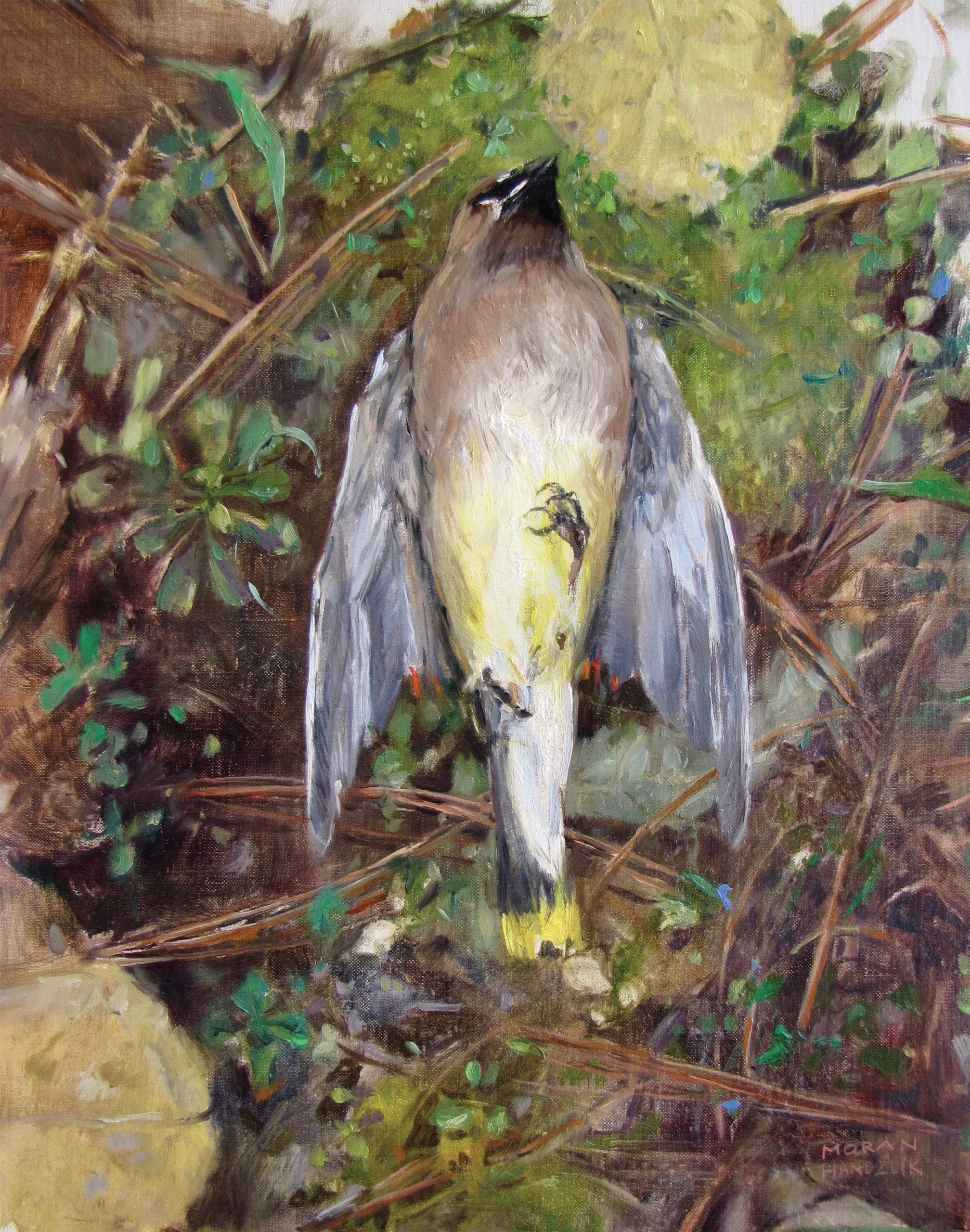
The major notes were completed in the field and then finished from life in the studio
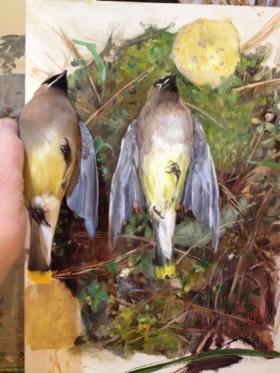
About a month later when first hard frost was eminent, I cut one of the last zinnias from the garden. I took the same cedar waxwing from the freezer. The bird and flower were placed shoulder to shoulder. I titled the painting “The Same Day.” I was thinking that on the same day we can entertain feelings of longing and beauty simultaneously. The bird and flower were mounted on a piece of blue foam, which stands as a symbol of the sky.
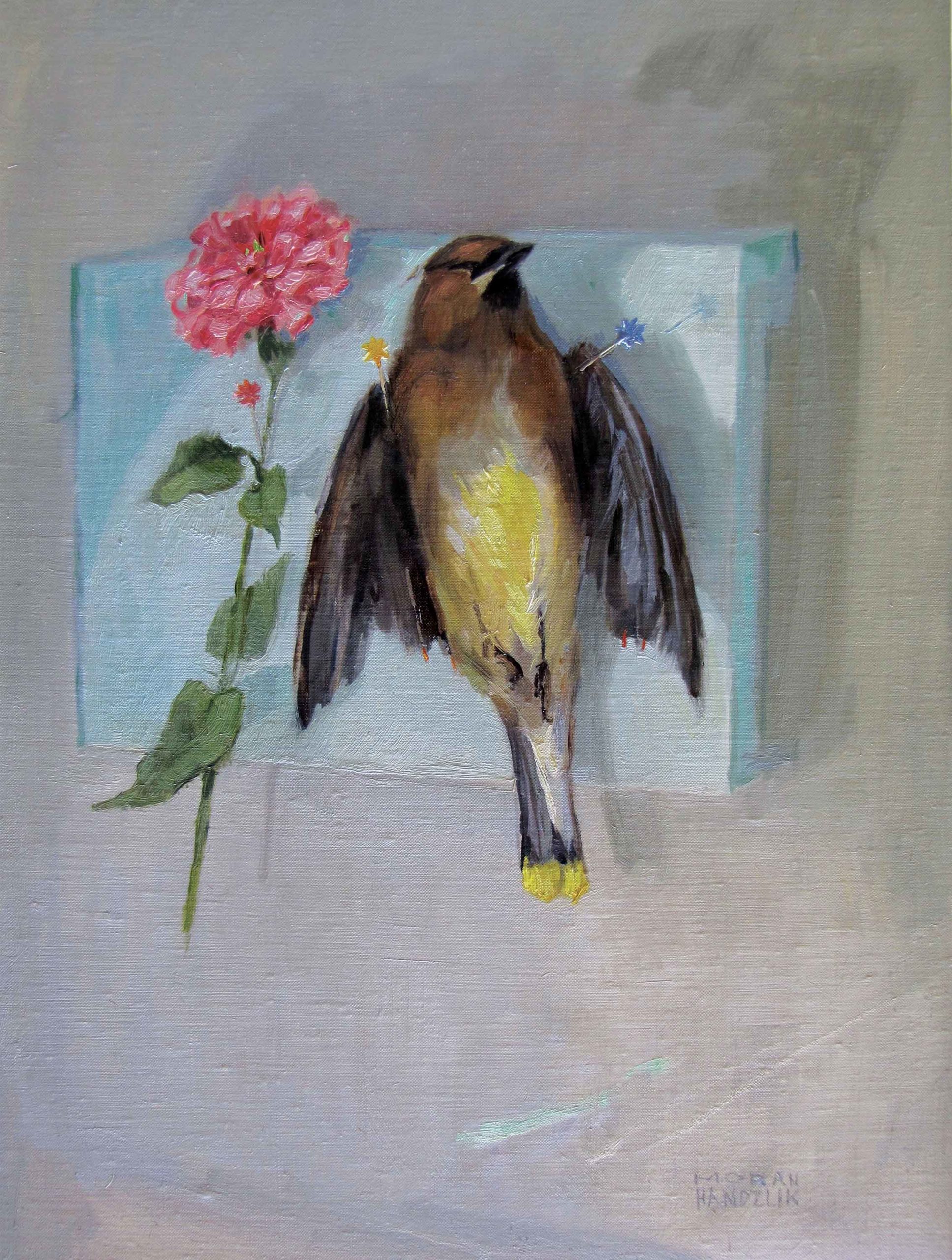
Again, this year I used the same bird to complete a large still life painting. Mums, last roses, lemon verbena were all part of the still life. The bird was placed on a pink linen napkin next to a bulb I pulled from the garden…death and potential life side by side in the atmosphere of beauty.
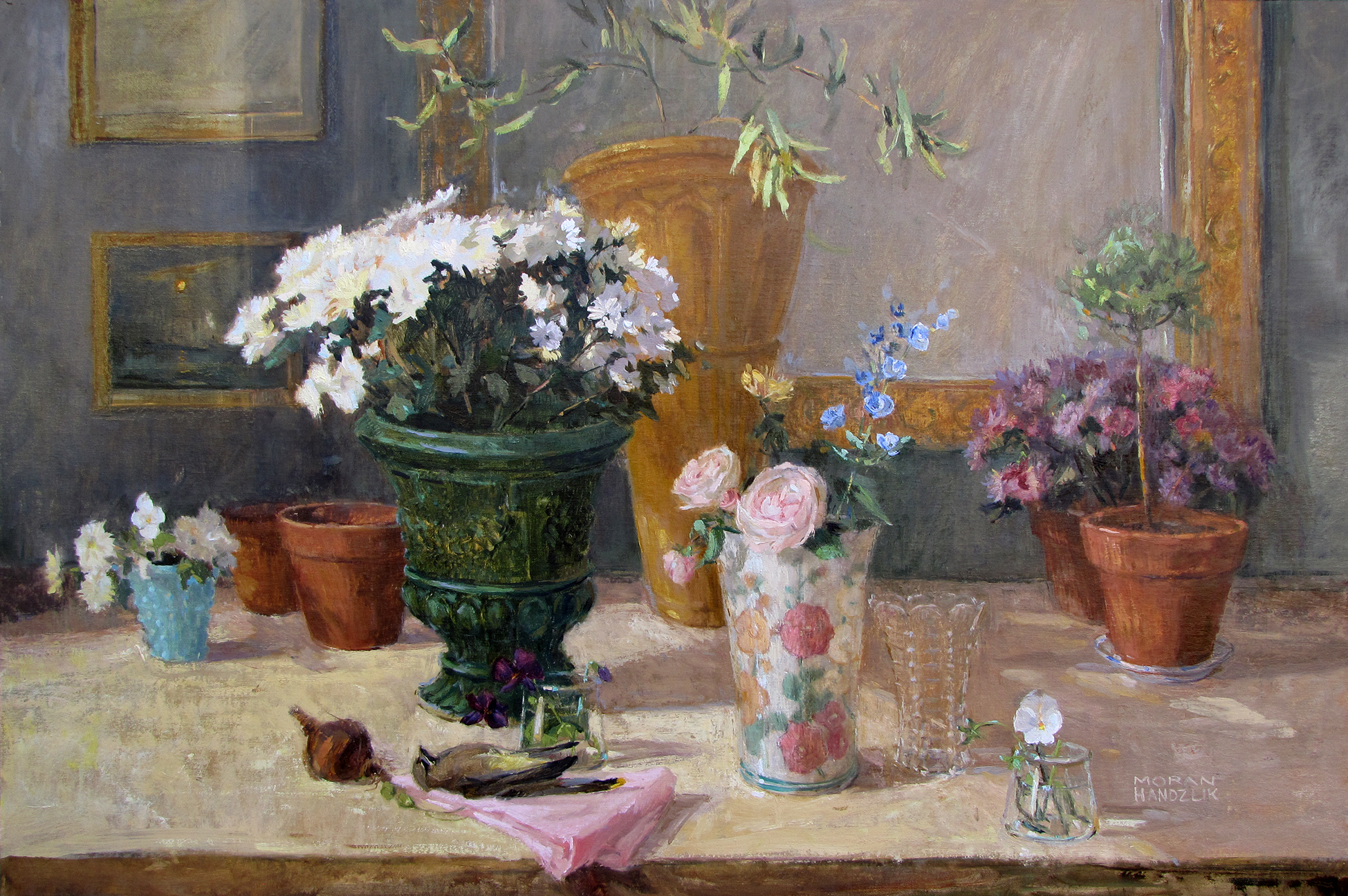
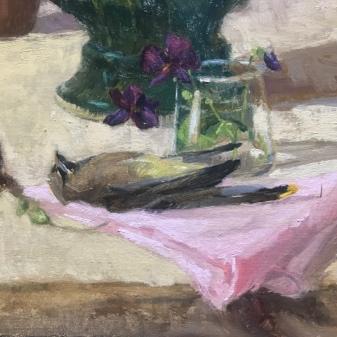
I recently took the bird out again. Its feathers are starting to fall out and it really needs to be buried. At this point I know it well, not its life but from the inert shape; the soft curve of its breast, the sharpness of its beak the shock of yellow at its tail tips; it weighs so little now. This is the last time it will be painted.
Arranging it, I am aware of amplifying both the empirical examination and the emotional contemplation of this creature which I have come to know through painting. For this painting, the bird becomes a subject that allows me to mourn the whole world affected by Covid-19.
I have placed the bird on the pink linen napkin again and I believe it has become a metaphor for my hand; open and tender. A humble bouquet of pansies is also in the painting. One white flower is simultaneously an image of honor, innocence and hope.
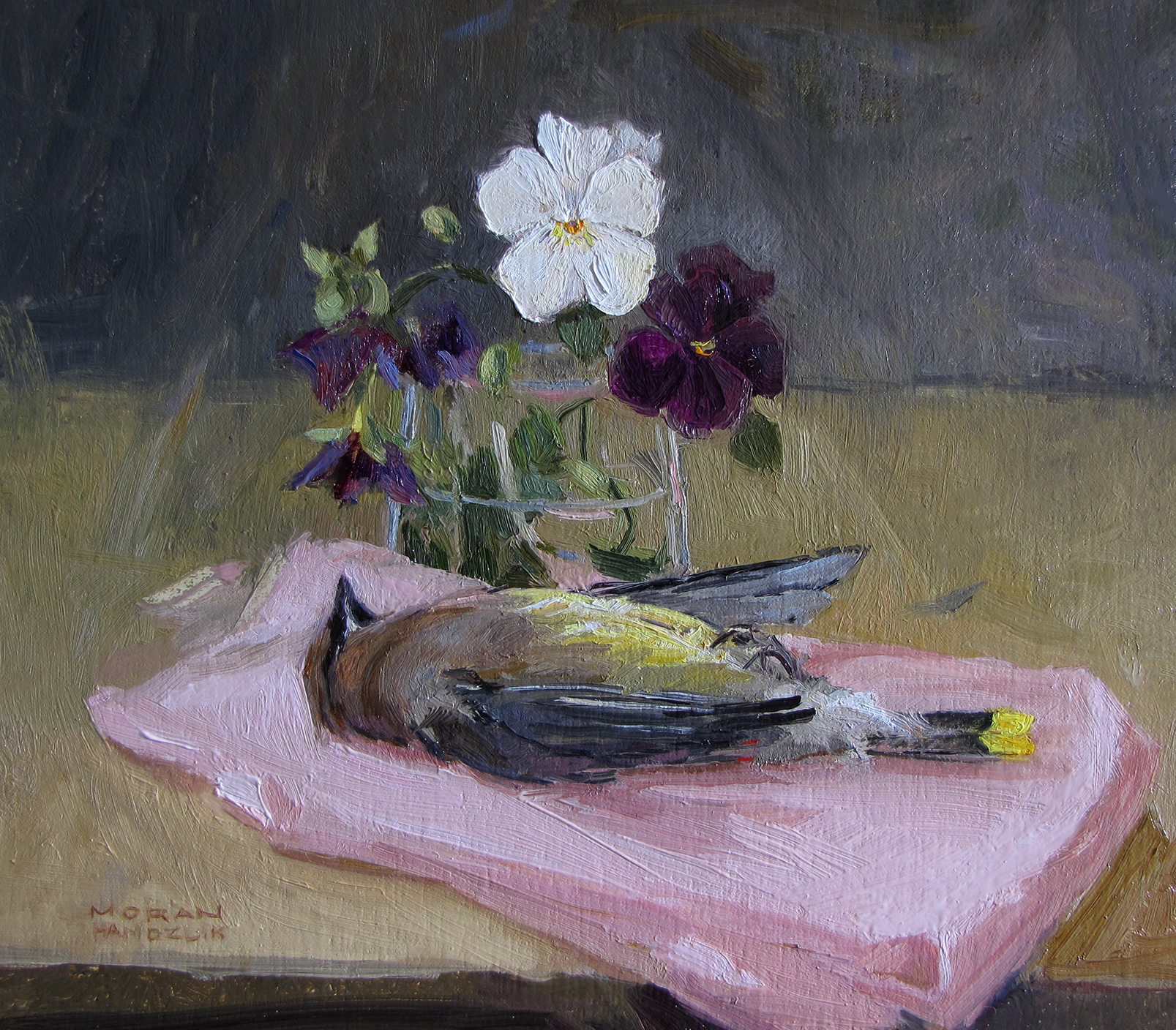
Tomorrow I will take the bird to the garden and bury it. Snow will come and shroud it in another blanket of whiteness, and then flowers will grow. Another dead bird will cross my path. I will pick it up and place it in my pocket. When I need a sad song to touch my heart and lift my spirits I will take it from the freezer to use in a painting to speak to someone else who is touched deeply by the poetics of the beautiful and the difficult.
***
Become a Realism Today Ambassador for the chance to see your work featured in our newsletter, on our social media, and on this site.





“Collective Sorrow, Collective Hope” is wonderful in title and imagery. It makes my heart sad and glad.
Yes mine too Karen. Thank you!
Comments are closed.